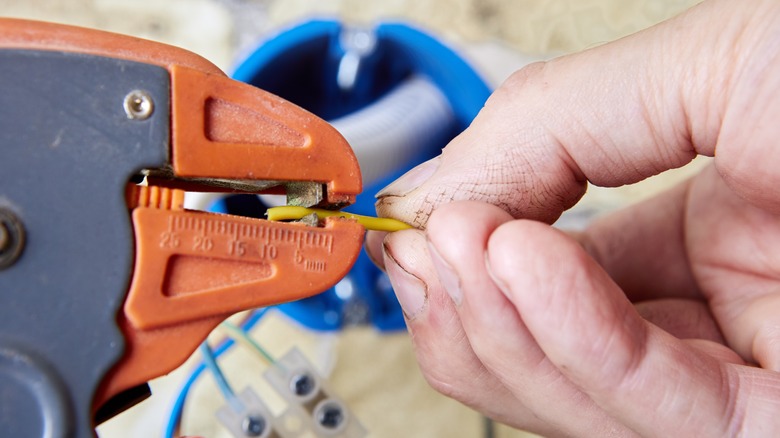Avoid One Dangerous Mistake When Using Wire Strippers For Home Electrical Projects
Wire strippers are an invaluable tool in any electrician's arsenal of equipment, and they are likewise useful for DIYers who are experienced enough to handle simple electrical tasks at home. Using a wire stripper, you can easily remove insulation from a wire and make a working electrical connection. But have you ever accidentally damaged your wire while trying to get the insulative coat off the metal? If you have, it's because you made a seemingly innocent but grave error and used the wrong size stripper for the job.
Wire strippers come in different sizes or gauges. The smaller the gauge, the larger the wire diameter it's meant to be used on. If you're trying to work with a stripper with a different gauge than the wire, you risk damaging the metal conductor. Not only does such damage create additional work for you, as you must clip away the ruined bit of the conductor, but having faulty wiring at home also creates a fire hazard. That's because if you don't notice the damage and connect the wires to a live circuit, the frail conductor can break and cause a short circuit or produce sparks and ignite adjacent materials if they're flammable. You can easily avoid these terrifying consequences by choosing the right wire stripper for your wire gauge or adjusting the stripper properly.
How to avoid damaging the conductor with a wire stripper
The key to stripping wires safely, without harming the conductor, is to match the stripper gauge to the wire gauge. Most wires have this value printed on their insulative jacket, so look for a number next to the acronym AWG (which stands for American Wire Gauge). For example, if you see a stamp that reads 10 AWG, you must use a 10-gauge stripper.
How you match the stripper to the wire depends on the stripper type. Some wire strippers are gauged, meaning they come with a number of notches to match different wire gauges. If you have this type of stripper, simply use the notch with the correct gauge (for example, 10 AWG), and the wire conductor should be intact after you remove the insulation. On the other hand, if you have an adjustable stripper, you'll need to configure it to the correct wire dimension. Typically, you'd make this adjustment either by rotating a screw on the device or retracting its jaw — the manufacturer's instructions should specify the method. And if you're lucky enough to have an automatic (also known as self-adjusting) wire stripper, you don't need to worry about tinkering around with gauges. These devices are designed to identify the gauge of the cable and tweak the notch automatically when you start cutting.
The steps outlined above should help you remove wire insulation safely without damaging the metal conductor and creating unsafe conditions in your home. However, unless you have prior experience with electrical tasks, the chance of making deadly errors is always present. It's always safer to call a professional electrician when making electrical connections, no matter how sure you are of your abilities.

